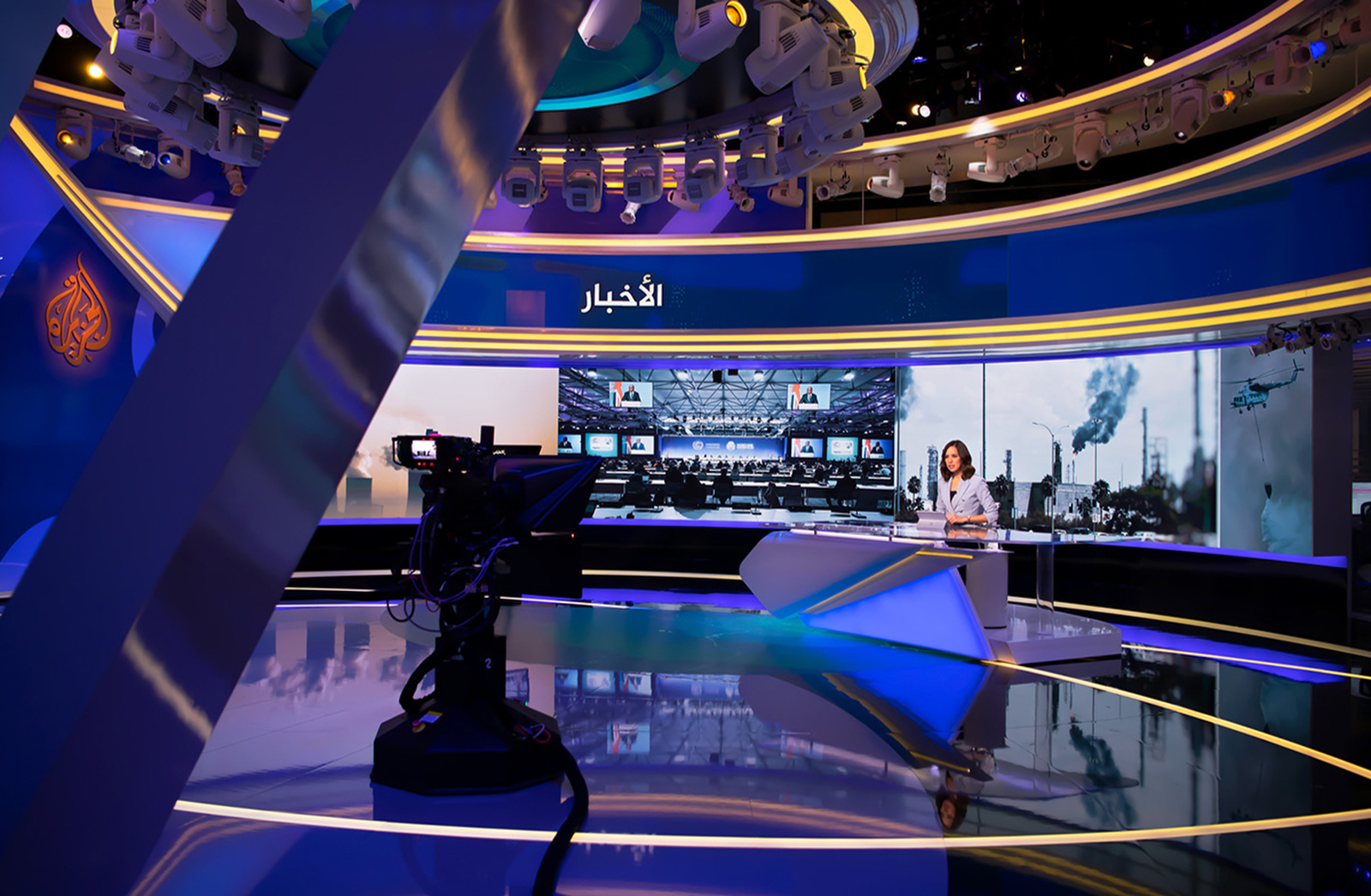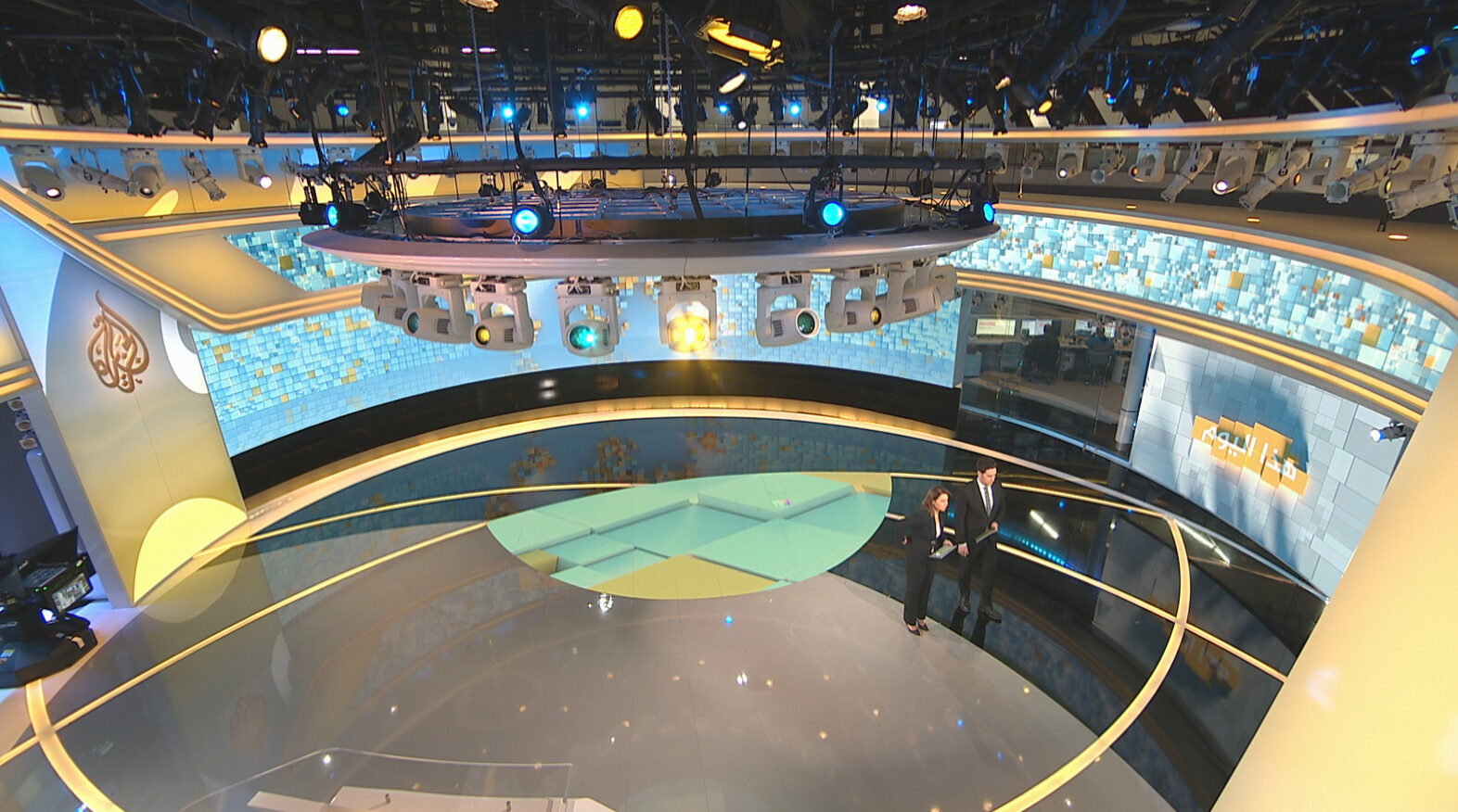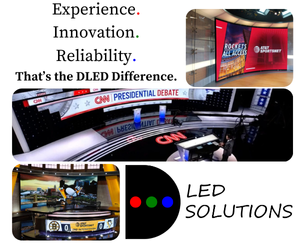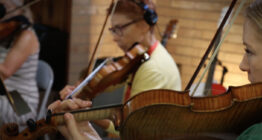Relaunching Al Jazeera’s storytelling from a director’s point of view

Subscribe to NCS for the latest news, project case studies and product announcements in broadcast technology, creative design and engineering delivered to your inbox.
The relaunch of Al Jazeera’s storytelling and design was a team effort spanning vendors from around the globe.
Helping bring the vision of a dynamic presentation to the screen was Eric Siegel, a broadcast veteran with experience across mediums as both a director and scenic designer.
“Because of the scale of the change and because of the extremely fast-tracked schedule, it was probably the most difficult project I have ever worked on in 40 years,” noted Siegel, who has worked as a consultant with Al Jazeera for over seven years.
“Because my relationship with them goes back and it’s so close… I don’t speak Arabic, but we speak each other’s production language.”
“There are very few teams in the world that could have been put together and worked in conjunction with their in-house people to bring something like this to air, except Al Jazeera. They have a spectacular engineering team. They have a spectacular group of people who just get things done.”
Working long days and through a variety of pandemic-related challenges, Siegel helped Al Jazeera reimagine its shooting style and pacing to bring a dynamic style to the broadcast similar to what’s seen on networks in the United States.


This change in storytelling was brought about by extensive research conducted for Al Jazeera by Nielsen which found audiences wanted more depth and more interaction while watching the news.
Mohamed Moawad, manager of output at Al Jazeera, notes the audience of the network is already well informed on the news of the day when they tune in, driven partially by the rise in push notifications and social news consumption.
This research found that viewers wanted more than just the headlines with the presenter leading them on a discussion of the day’s events.
To capture this change in direction and delivery style, Siegel was tasked with rethinking dayparts, taking full advantage of each of the network’s new sets.


“We must have done 25 pilots of 25 different services in the course of the two months and we were piloting and working things out literally while the studio was in construction,” said Siegel.
Using Cinema 4D for previsualization with a 3D model of the set design from Clickspring, Siegel worked through every aspect of the network’s lineup.
“We previsualized all the blocking for all the cameras with the specific lenses and the specific pieces of equipment… Once I got there, we translated all the shots that we had previsualized into the Ross Video robotic system.”
In total, Siegel estimates there were between 200 and 300 shots previsualized across the three sets.


To aid in the new shooting style, the number of floor cameras in each studio was reduced along with the removal of jibs.
“We brought steady cams into every one of the broadcasts to give them a much more mobile, a much more exciting, a much more ‘walk and wander’ feel to the shooting pattern,” said Siegel.


Ross Video Furio SkyDolly robotic cameras were also added around the redesigned studio and newsroom, circumnavigating the spaces to provide a unique vantage point.
“They’ve always had robotic cameras, but they never had robotic cameras that could move around the floor, the robotic cameras were in fixed positions, so this was a completely new world for them,” said Siegel.


To account for this, Siegel created a special column inside the program rundown with information on how to block and shoot each daypart across Al Jazeera’s 24-hour schedule.
“Some of these news services are hours long… So the only way a director’s ever going to be able to direct a program like that is if he puts all of his shot information into the newly created director’s notes column, so that his cameramen, his robotic cameramen could follow along with the program,” Siegel added.
“Moving from a traditional to dynamic delivery changes how you deal with everything,” said Moawad, noting it impacted every system and workflow at the network from Avid iNews to Vizrt Mosart automation.
“There were so many elements needed from the journalists plus flexibly from the directors,” said Moawad. “It was really challenging, but of course they were excited.”
“We completely redid their news workflow so that their rundowns contained much more information in a much more organized fashion,” said Siegel.
To help reinforce the workflows, a series of grids was also established to easily identify areas of graphics on the studio’s massive LED displays. These grids were also part of visual rundowns developed to allow show director’s at Al Jazeera to storyboard each day’s programming.
“It’s one thing to make shots, but it’s another thing to make those shots directable in the sequence of a program,” noted Siegel.
“I can’t stress how important it is for me to work out all of the shots, all of the blocking, all of the positions, all of the relationships, all of the shooting sequence, especially for a news production, where there are no rehearsals, but to work all of that out and be able to let the producers see it, the camera people see it, the graphical artists see it, all in advance before we ever step on the stage.”
Siegel notes this project reaffirmed his belief in intensive planning and intensive previsualization in broadcast, which he has incorporated across his projects.
Explore more of our in-depth look at the relaunch of Al Jazeera including the new scenic design, motion design and theme music.
Subscribe to NCS for the latest news, project case studies and product announcements in broadcast technology, creative design and engineering delivered to your inbox.







tags
Al Jazeera, Al Jazeera Arabic, Al Jazeera Media Network, Cinema 4D, Eric Siegel, maxon cinema 4d, Mohamed Moawad, Nielsen, Ross Furio, Ross Video, Ross Video Furio, Ross Video Furio SkyDolly, Walk and Wander
categories
Broadcast Industry News, Content, Heroes, International Set Design, News and Entertainment Production Systems, Set Design